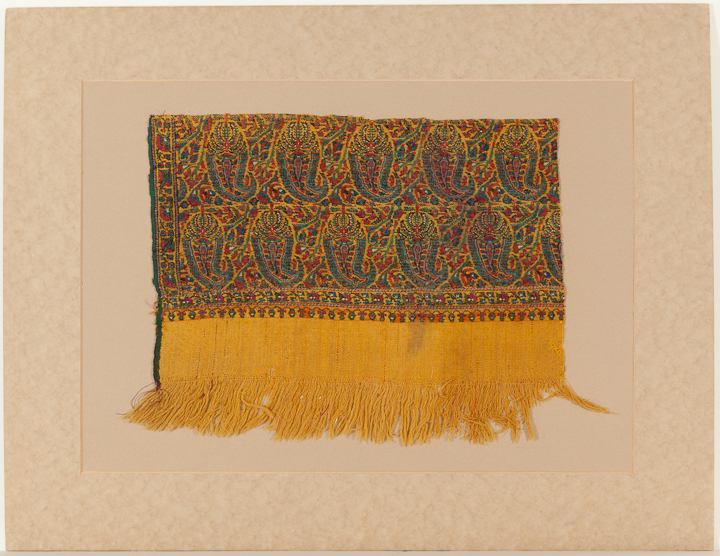
Culture: Indian or Persian
Title: Shawl Weave
Date Made: 19th century (early)
Type: Textile
Materials: Textile, woven
Measurements: mount: 18 in x 14 in; 45.7 cm x 35.6 cm; sheet: 10 1/2 in x 8 in; 26.7 cm x 20.3 cm
Credit Line: Gift of George D. Pratt
Accession Number: T.1929.13
Collection: Mead Art Museum, Amherst College
This shawl fragment is believed to be of Indian or Persian origin, and it functions in this exhibition as representative of an early nineteenth-century Indian shawl. This fragment, along with many other objects, was acquired by Amherst College in 1929 as a gift from conservationist, collector, and philanthropist George Dupont Pratt (Amherst College Class of 1893). Pratt’s massive collection of pottery and textiles is illustrated by the number of objects donated to Amherst College in his name.
This shawl features a repeating boteh motif composed of several colors: blue, green, red, and yellow. The boteh, or stylized leaf, motif is commonly referred to as paisley, named after Paisley, a town near Glasgow in Scotland, which became well-known for textile production. In the nineteenth century, shawls became a ubiquitous accessory in women’s dress as they rapidly developed as an export item and Europeans began weaving their own shawls in imitation of Indian-produced examples.
Collections Database: AC T.1929.13